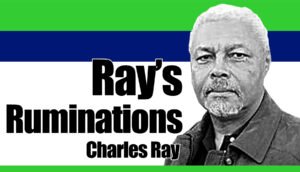The Bureau of Fisheries and Aquatic Resources is urging stakeholders of the Visayan Sea to remain committed to responsible fishing practices.
The BFAR said that with the lifting of the three-month closed fishing season in the Visayan Sea, efforts should focus on strengthening enforcement, expanding the Marine Protected Areas (MPAs), and addressing illegal, unreported, and unregulated (IUU) fishing, particularly the use of fine-mesh nets, Danish Seine, or hulbot-hulbot, and trawl fishing in municipal waters.
The annual prohibition in the catching of sardines, herring, and mackerels in the conservation area of the Visayan Sea starts every Nov. 15.
The BFAR in Western Visayas said the success of the closed season is a result of strong collaboration among government agencies, local government units, and the fishing communities.
Region 6 alone played a key role in ensuring compliance, conducting 49 joint seaborne patrols, 45 portside and market inspections, 31 landing denial operations, and 28 various information and education activities, BFAR6 said in a statement.
“In the process, six commercial-scale trawls and three modified Danish Seines were apprehended during the three-month period,” it added, noting that commercial fishing operators complied with regulations, showing increased awareness on the importance of responsible fishing.
“Our challenge to LGUs is this: provide your fishers with support beyond fisheries—ensure they have access to health services, education, and economic opportunities that will allow them to transition to more sustainable practices,” BFAR6 director Remia Aparri stressed.
Aparri added that while conservation remains the priority, the BFAR and its partners recognize the socioeconomic challenges faced by fishing communities.
She urged LGUs to provide essential support services, such as healthcare, education, and alternative livelihoods, to ease the economic impact every time the closed season is in effect.
The closed season covers 25 local government units (LGUs) across Negros Occidental, Iloilo, Capiz, and Cebu.
BFAR is also working on improving post-harvest practices, packaging, and marketing support to enhance the value of goods, like tabagak and other fishery products.
Marking its 12th year since the intensified implementation in 2013, the science-based conservation measure continues to show promising results in ensuring the sustainability of key fish species, particularly sardines, herring, and mackerels.
“But let’s be clear—the closed season is just one management tool. If we want true sustainability, we need a comprehensive approach—balancing conservation with production, investing in aquaculture, and ensuring that our small-scale fishers remain at the heart of our efforts,” Aparri said.
“Compliance with responsible fishing practices should not be seen as a burden, but as an investment in a future where there will always be fish to catch,” she added.
By allowing fish stocks to replenish during their spawning period, the initiative has contributed to improved catch sizes and short-term benefits for both small-scale and commercial fishers despite other existing IUU, the BFAR said.
Preliminary data from the National Stock Assessment Program also suggest signs of biological recovery, with sardine sizes showing gradual improvement over the years, it added.
Under BFAR Fisheries Administrative Order No. 167-3, the harvest ban covers species of sardines, like bali sardine, or tamban, tunsoy, haul-haul; goldstripe sardine, or halobaybay, lapad, tamban lison, lapa; fimbriated sardine or tunsoy, lao-lao, tabagak, liryan; and rainbow sardine, or tulis, balantiyong, hilos-hilos.
Commercial fishers are also prohibited from catching short-bodied mackerel or hasa-hasa, and indian mackerel or bulao and alumahan, as well as their larvae, fry or young, locally as lupoy, silinyasi, linatsay, or manansi. ||




